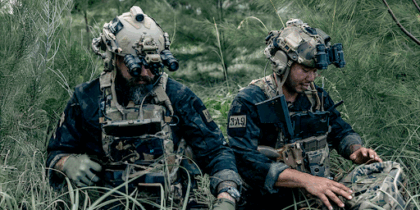2018 has been an exciting year of digital transformation and technology innovation for the federal government. I am honored to have recently celebrated the accomplishments of our nation’s top federal innovators and technology leaders at this year’s FedScoop 50.
At the awards ceremony, leaders in the federal technology space were recognized for making a lasting impact on their agencies, communities and nation in the past year — and I was humbled to be at the event. The leaders recognized this year prove that federal government across all agencies is making tremendous strides in technology innovation, pushing the boundaries of what’s possible for the mission when you deploy technology the right way.
The amount of innovation over the last year has been staggering, as agencies evolve their operations for a modern era. Here are just a few examples to highlight the great work being accomplished by defense and civilian agencies across key IT modernization and technology areas spanning mobile, cloud, cybersecurity and more including emerging areas such as blockchain.
Innovation in Defense Agencies
The Defense Innovation Unit (DIU) has become a permanent entity at the Department of Defense (DoD) with renewed efforts to tap into the tech advancements and bright minds the likes of Silicon Valley. DIU has been particularly instrumental in accelerating the adoption of commercial technology into the Department. DoD and DIU will continue to closely collaborate to bring innovative emerging technology solutions not just into the hands of their service members but also to the overall market.
DoD has been focusing efforts on harnessing the latest technology innovation for civilian and military personnel. The Defense Information Systems Agency (DISA), for example, is continuing to add unclassified mobility solutions that add cutting-edge capabilities while keeping costs down. The Defense Mobility Unclassified Capability (DMUC) is currently in use on more than 120,000 mobile devices, which until recently was limited to organizations using Defense Enterprise Email (DEE).
Digitize Your Government Agency
Get this guide to drive collaboration, boost productivity and ensure security in the public sector. Download Now
The agency has seen significant improvements including automating the onboarding process, growing the mobile application store to more than 1,000 supported apps, and providing derived credentialing to send and receive encrypted email. Upcoming features include a digital signature app for PDF documents (a first in DoD), mobile endpoint protection, mobile content management and assisting organizations with forensics scanning of their DMUC devices.
Innovation in Civilian Agencies
The Department of Homeland Security (DHS) is driving some exciting initiatives that will have powerful impacts on federal cybersecurity, including developing an enterprise strategy for security operations centers and hiring the experts needed to tackle the department’s top cyber challenges. Additionally, DHS components, like U.S. Customs and Border Protection, have been conducting blockchain pilots with industries to see how the emerging technology could be used to combat counterfeit products and intellectual property theft.
The U.S. Department of Agriculture (USDA) has gone on to win not one, but two rounds of grants from the Technology Modernization Fund (TMF). First, the agency was awarded for its Famers.gov portal, which aims to deliver a better and more complete citizen experience for America’s farmers, ranchers, conservationists and private foresters through an easy-to-use, intuitive interface. In the most recent round of awards, the agriculture agency will receive another $5 million for infrastructure optimization and cloud adoption. I look forward to seeing similar projects advance thanks to funding secured by additional agencies including the Department of Energy (DOE) for enterprise cloud email integration, the U.S. Department of Housing and Urban Development (HUD) for its mainframe application migration project, and the Department of Labor (DOL) for digitizing its currently paper-based labor certification project.
Lastly, the General Services Administration (GSA) has gone to great lengths to ensure the government is delivering the best of services to citizens through their preferred mediums by promoting the use of mobile websites and apps. This has been timely and in accordance with the recent passage of the Connected Government Act, which requires agencies to make sure new citizen-facing websites are mobile friendly. As a result, more federal agencies are now working to make their websites load quickly on mobile, offer mobile-optimized navigation and supply the same basic services as a desktop site.
This is by no means an exhaustive list and such examples barely scratch the surface of all the bright ideas and hard work occurring in federal government. The leaders of these agencies and the people within them work tirelessly to ensure the best products and technologies are being used by their agencies. It is my honor to be recognized among them and my distinct pleasure to celebrate with these people as Samsung continues to strive to help the government deliver the most cutting-edge tech and services needed for government to perform at its best.
Learn how Samsung is helping government harness IT innovation.








